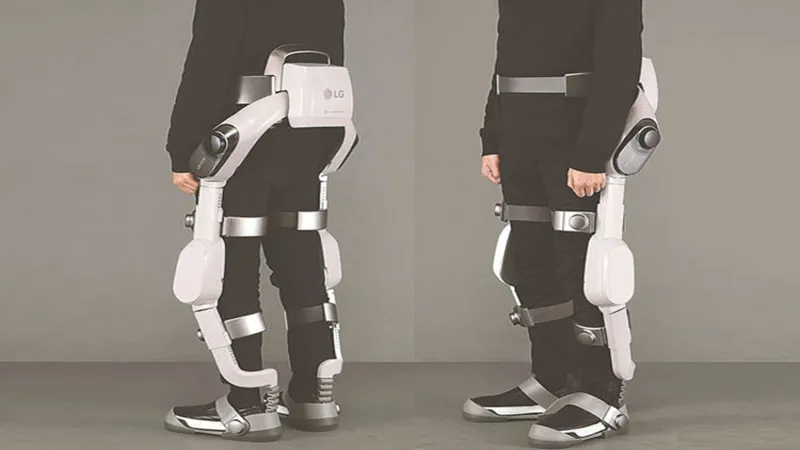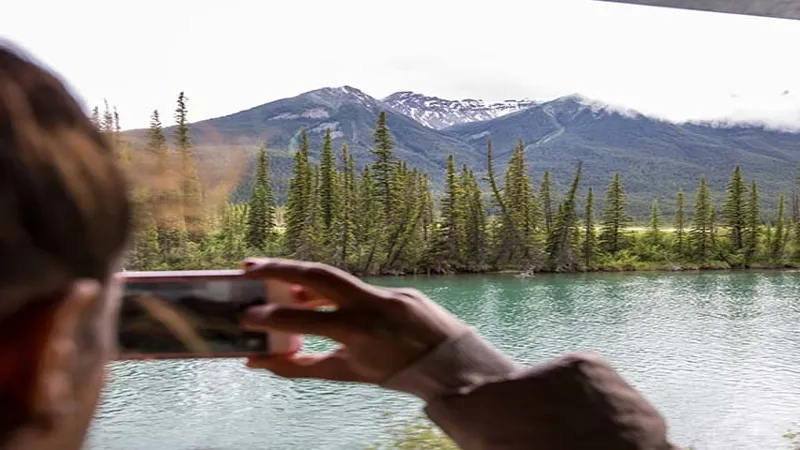In a remarkable fusion of technology and adventure, Mount Tai, a revered hiking destination in Shandong Province, China, has unveiled AI-powered exoskeletons designed to revolutionize the climbing experience. Known for its daunting 7,000-step ascent, this iconic mountain has posed challenges even for the fittest hikers. However, with the introduction of these innovative devices, tourism officials aim to transform the hiking landscape, making it accessible to individuals of all ages and fitness levels. As travel enthusiasts prepare to embrace this cutting-edge solution, the future of adventure tourism is poised for an exciting evolution, inviting a broader audience to explore the breathtaking beauty of Mount Tai.
| Category | Details |
|---|---|
| Location | Mount Tai, Shandong Province, China |
| Innovation | AI-powered exoskeletons to assist climbers |
| Launch Date | January 29, 2024 (Chinese New Year) |
| Weight of Exoskeleton | 1.8 kilograms |
| Battery Life | Approximately 5 hours |
| Climbing Assistance | Eases leg strain during ascent |
| User Fees | 60 to 80 yuan ($8-$11 USD) per use |
| Target Users | Elderly, children, families, visitors with mobility impairments |
| User Experience | Positive feedback but some minor inconveniences reported |
| Future Developments | Potential for AI-assisted trekking gear in other destinations |
| Market Trends | Growing demand for mobility assistance technologies for aging population |
| Health Care Applications | Could expand into elderly mobility, healthcare, and rehabilitation |
Introduction to AI in Adventure Tourism
Adventure tourism is all about exploring the great outdoors and taking on exciting challenges. Recently, Mount Tai, a famous hiking spot in China, introduced AI-powered exoskeletons to help climbers tackle its steep paths. This innovative technology is designed to make hiking easier for everyone, no matter their age or fitness level. With AI in adventure tourism, people can enjoy nature without being held back by difficult climbs.
These exoskeletons are like super suits that help hikers climb Mount Tai’s 7,000 steps with less effort. By using special sensors and smart technology, the exoskeletons adjust to each climber’s movements. This means that whether you are a young adventurer or an older hiker, you can experience the breathtaking views from the top of Mount Tai without worrying about the tough climb.
How AI-Powered Exoskeletons Work
The exoskeletons designed for Mount Tai are lightweight and easy to wear, making them a perfect companion for hikers. Weighing only 1.8 kilograms, they wrap around a user’s waist and thighs, helping to reduce the strain on legs during the climb. This means hikers can conserve their energy and enjoy the beautiful scenery instead of feeling tired and sore.
These devices are powered by advanced AI algorithms, which allow them to learn and adapt to the user’s movements in real-time. With a dual-battery system that lasts about five hours, hikers can receive support for most of their climb. This smart technology helps make climbing Mount Tai more accessible and enjoyable for everyone, especially those who might have struggled before.
The Importance of Accessibility in Tourism
Accessibility is a big deal in tourism because everyone should be able to enjoy beautiful places like Mount Tai. The introduction of AI-powered exoskeletons is a game-changer, especially for older adults and those with mobility challenges. By making hiking easier, more people can explore the great outdoors and experience the joy of nature.
During the trial of these exoskeletons, many senior citizens participated and found the experience enjoyable and less strenuous. This shows that technology can help bridge the gap between adventure tourism and accessibility, allowing families and friends to hike together regardless of their physical abilities.
User Experiences with AI Exoskeletons
While many hikers have praised the AI-powered exoskeletons for making the climb easier, some have shared their experiences as well. Hikers like Jacky, a content creator, noted that removing the exoskeleton made walking feel more challenging. This feedback is important for developers to improve the technology and ensure that users have a pleasant experience.
Users also mentioned some minor issues, such as the battery life and the need for better mobility adjustments. However, the excitement about this technology shows that there is great potential for improvement. The developers are already working to address these concerns, which will make the hiking experience even better for future users.
The Future of Smart Technology in Tourism
The success of the AI-powered exoskeletons at Mount Tai could inspire other hiking destinations around the world to adopt similar technologies. As travelers seek more enjoyable and accessible adventures, smart technology will likely play a larger role in tourism. Imagine hiking in national parks with supportive gear or exploring cities without feeling tired!
With advancements in technology, we may soon see exciting new travel gadgets that help everyone enjoy their adventures. The integration of smart devices will create a more inclusive travel experience, allowing people of all ages and abilities to explore amazing destinations with ease.
Smart Solutions for an Aging Population
As China’s population ages, there is a growing need for mobility solutions like AI-powered exoskeletons. With an increasing number of seniors wanting to enjoy nature and travel, innovations in technology can help them stay active and engaged. These devices can provide the necessary support to make hiking and exploring easier for older adults.
Kenqing Technology, the company behind the Mount Tai exoskeletons, has also created models specifically for elderly users. This shows a commitment to creating technology that meets the needs of an aging population, making it possible for more people to enjoy outdoor adventures and improve their quality of life.
Frequently Asked Questions
What are AI-powered exoskeletons?
AI-powered exoskeletons are wearable devices that help climbers by reducing physical strain. They use smart technology to assist users’ movements, making hiking easier for everyone.
How do exoskeletons enhance the hiking experience at Mount Tai?
These exoskeletons make the steep ascent of Mount Tai, known for its 7,000 steps, more accessible. They support users, allowing people of all ages and fitness levels to enjoy the climb.
Who can benefit from using exoskeletons while hiking?
Exoskeletons are helpful for elderly travelers, children, families, and those with mobility issues, enabling a wider range of people to experience adventurous hiking.
What feedback have users provided about the exoskeletons?
Users reported the exoskeletons eased climbing but noted some challenges, like battery life and adjusting to movements. Overall, most found them beneficial for their hiking experience.
When will the exoskeletons be available for all hikers?
The AI-powered exoskeletons are expected to be widely available in early March 2025, following positive trial feedback from initial users.
How do these exoskeletons address the needs of China’s aging population?
With a growing elderly population, these exoskeletons offer mobility solutions, allowing seniors to enjoy outdoor activities and enhancing their quality of life.
What future developments are expected in smart tourism technologies?
Experts predict more integration of smart mobility devices in tourism, including AI-assisted gear for various outdoor activities, making travel more accessible for everyone.
Summary
Mount Tai in China has introduced AI-powered exoskeletons to enhance the hiking experience, making it easier for climbers of all ages and fitness levels to tackle its challenging 7,000-step ascent. The exoskeletons, weighing only 1.8 kg, support users by reducing leg strain during climbs. Launched on January 29, 2024, the trial attracted over 200 participants within a week, including many senior citizens. This technology not only boosts accessibility in adventure tourism but also addresses the needs of an aging population, setting a precedent for other hiking destinations worldwide.



